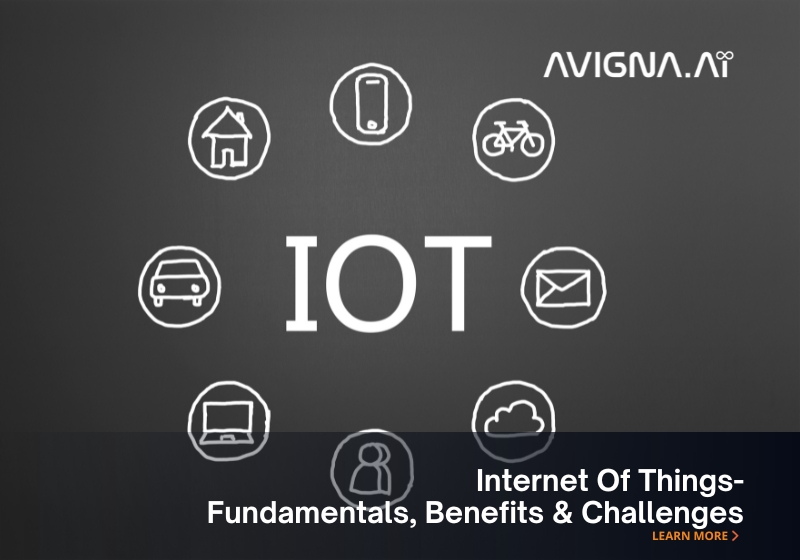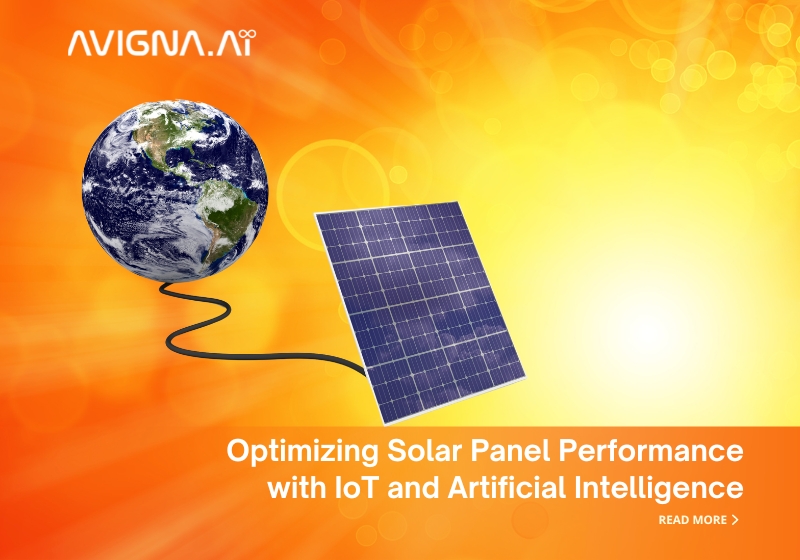Internet Of Things Fundamentals, Benefits & Challenges
The modern world is becoming increasingly interconnected. Devices around us are slowly gaining intelligence from our homes to offices, manufacturing plants to cities. These “things,” as they are called, communicate with each other and help optimize various processes. This emerging phenomenon of interconnected intelligent devices is known as the “Internet of Things” or IoT. In this article, I explained IoT fundamentals that accelerate your IoT learning journey.
What is IoT?
The Internet of Things (IoT) refers to the network of physical devices, vehicles, home appliances, and other items embedded with electronics, software, sensors, actuators, and network connectivity, which enables these objects to connect and exchange data. Each ‘thing’ is uniquely identifiable through its embedded computing system but can inter-operate within the existing Internet infrastructure.
Key Characteristics of the Internet of Things
Some of the key enabling technologies that fueled the growth of IoT include:
- Connectivity: IoT devices connect and communicate with the internet to other devices, apps, and systems via embedded sensors, software, and other technologies. Wireless protocols like WiFi, Bluetooth, cellular, and satellite facilitate these connections.
- Sensing: IoT devices can monitor their environment and send data via internet connections. Sensors enable devices to detect temperature, location, light, motion, humidity, and more changes.
- Data Generation and Exchange: IoT devices continuously generate and share data. Advanced analytics turn this data into insights for improvements.
- Remote Monitoring and Control: Connectivity enables users to remotely monitor IoT devices to view and manage conditions from anywhere. Users can also remotely control devices when settings need adjustment.
- Improved Efficiency and Automation: IoT systems automate processes, enhance efficiency, and reduce waste through timely data and remote manageability. Devices can share data to initiate automated actions and triggers between themselves locally.
- Enhanced User Experience: Smart IoT devices enhance users’ living and working environments through connectivity and intelligence. Smart home devices make homes more convenient, while industrial IoT improves workplace safety and productivity.
Suggested Reading: Common IoT Integration Challenges Businesses Face
Major Components and Architecture
IoT solutions require an ecosystem of components and technologies working together seamlessly and securely. Here are the key elements that comprise the architecture of IoT systems:
IoT Devices
The “things” in the Internet of Things are smart devices embedded with connectivity and intelligence. An incredibly diverse range of IoT devices spanning consumer, enterprise, and industrial contexts.
Connected lighting, intelligent speakers, robot vacuums, security systems, thermostats, appliances, entertainment systems, and other devices are all part of the home IoT ecosystem.
IoT devices include fleet tracking systems, smart meters, infrastructure monitoring, remote sensors, asset trackers, and more in enterprise and industrial settings. These devices optimize operations.
IoT devices contain embedded sensors, processors, software, and connectivity interfaces to internet networks. They come in all shapes, sizes and capabilities.
Also Read: How to Calculate Enterprise IoT ROI?
IoT Gateway
IoT gateways serve as the bridge between devices and networks. They enable connectivity and communication between IoT devices and cloud platforms.
Gateways aggregate and filter data from devices. They also analyze data locally. Additionally, they translate protocols to facilitate device connections to networks. Gateways provide local control and preprocessing capabilities.
IoT platforms require gateways suited to their architecture and devices. Gateways are available from leading IoT platform vendors and third parties.
Cloud Platforms
Cloud platforms are vital for IoT systems, providing centralized hubs for connectivity, data, analysis, and device control. IoT platforms offer PaaS (platform-as-a-service) solutions tailored to IoT needs.
- IoT cloud platforms provide essential capabilities:
- Connectivity management for interfacing with devices over various protocols
- Device management for onboarding, configuring, monitoring, and updating device fleets
- Data ingestion at scale for collecting and processing high device data volumes
- Databases to store and organize structured/unstructured data
- Analytics engines to turn data into insights
- Development tools and APIs to build IoT apps and solutions
- Security mechanisms for access control, data protection, and more
Leading IoT platform vendors include AWS, Microsoft Azure, IBM Watson, Salesforce IoT Cloud, and Oracle IoT Cloud Platform. There are also many other commercial and open-source options.
IoT Network Protocols
Network protocols enable devices to communicate and share data with IoT platforms and other systems. IoT supports numerous wired and wireless protocol standards to suit varied connectivity scenarios.
- Common IoT wired protocols include Ethernet, Modbus, BACnet, KNX, and Powerline.
- Prominent wireless protocols are WiFi, Bluetooth Classic/BLE, ZigBee, LoRaWAN, Sigfox, LTE-M, and NB-IoT.
IoT platforms and gateways support one or more protocols for interfacing with devices. Organizations select protocols aligned with their use cases, environments, and scalability needs.
IoT Security
Securing an IoT system’s many connection points and data flows is paramount. IoT security mechanisms must span edge devices, gateways, cloud platforms, and touchpoints.
Key IoT security measures include:
- To secure data both in transit and at rest, use encryption
- Identity and access management controlling authorized user access
- Authentication to validate trusted devices and users
- Security monitoring to detect threats across components
- Regular software updates to address vulnerabilities
- Compliance with security standards and best practices
IoT platforms offer integrated security capabilities and integrations with external security tools.
IoT Analytics Software
Analytics tools help transform IoT data into insights for business value. IoT analytics capabilities include:
- Reporting for tracking KPIs and metrics
- Dashboards for understanding operational IoT data
- Predictive analytics to model outcomes and trends
- Machine learning to power automation and optimization
- Real-time stream processing to capitalize on live data
IoT platforms include basic analytics functionality. Many also integrate with leading third-party analytics software for added capabilities.
IoT Applications
IoT powers interactive web and mobile applications, delivering user interfaces to monitor and control devices, gain data insights, and more.
Apps connect to IoT platforms via APIs and SDKs. Developers build apps using web development languages/frameworks, mobile development platforms, and other standard languages supported by IoT clouds.
IoT applications bring smart devices and their capabilities directly to users for home, work, and industrial environments. The apps transform raw IoT data into interactive visibility.
Key IoT Application Areas
By integrating digital and physical, IoT opens new frontiers across sectors. Notable domains include:
Smart Cities
The built environment undergoes data-enabled transformation. Intelligent transportation optimizes traffic flows. Environmental sensors enhance public safety and emergency response. Utilities leverage smart meters for proactive fault detection.
Smart Manufacturing
Condition monitoring ensures predictive maintenance of heavy machinery. Real-time quality assurance reduces product defects through digitized production flow insights. Supply chain visibility optimizes logistics through integrated inventory levels.
Smart Healthcare
Remote patient monitoring enables earlier interventions. Implanted medical devices automate treatment based on biochemical readings. Telehealth expands access through virtual consultations supported by personal wellness trackers.
Smart Infrastructure
Structural health sensors detect corrosion, cracks, or vibrations compromising integrity. Energy grids balance renewable intermittency with smart meter flexibility programs. Predictive maintenance schedules reduce downtimes.

This book gives you insider secrets on the top three aspects of project planning for an IoT program. Using this guide, you can design a successful IoT program where you know there will be definite value addition and a win for the company. You will also learn how to design an IoT program that stands the test of time.
Would you like to know the top three stages to help you achieve such a successful program? If yes, download this free guide.
Benefits of IoT
When implemented effectively, IoT provides numerous organizational and societal benefits:
- Increased Efficiency – Remotely monitoring usage patterns allows for optimizing resource consumption.
- Cost Savings – IoT reduces operational costs by preventing wastage and automating manual processes.
- Enhanced customer experience – Providing convenience, safety, and personalized service builds loyalty.
- Data-driven decision-making – Actionable insights from IoT data help businesses innovate and grow.
- Predictive maintenance – Detecting equipment issues beforehand prevents unplanned downtime.
- New revenue streams – IoT enables outcome-based business models by offering outcomes over products.
- Increased productivity – Automation through IoT helps organizations redirect manpower to higher-value tasks.
- Sustainability – Greater efficiencies through IoT can positively impact the environmental footprint.
Challenges of IoT Adoption
While IoT presents immense opportunities, its adoption also poses challenges:
- Security & Privacy – Maintaining integrity, confidentiality, and privacy of IoT-connected systems and data.
- Interoperability – Ensuring seamless communication across diverse IoT ecosystems and integrating legacy systems.
- Device/Network Management – Provisioning, configuring, upgrading, and troubleshooting large distributed device volumes.
- Skills Gap – Finding skilled professionals with expertise across domains like engineering, cloud, data science, etc.
- High Investment Costs – Significant upfront investments are needed for hardware, connectivity, platforms, and applications.
- Reliability – Designing robust IoT infrastructure, protocols, and devices to withstand failures, threats, and environmental factors.
- Complexities of Implementation – Integrating IoT security, mobility, scalability, etc., during architecture, development, and deployment.
- Regulatory Compliance – Stringent industry-specific safety, privacy, and liability regulations that IoT systems must conform to.
- Ensuring Adoption – Consumer education and a clear value proposition are necessary to drive mass-scale adoption.
The Possibilities of IoT
The Internet of Things delivers transformative value through device connectivity and data exchange. It paves the way for major improvements across industries, cities, supply chains, and everyday lives. Those maximizing IoT’s transformative power prepare for transformation themselves. Data-driven operations require openness to reimagine each facet of business through a connected lens. Done right, the benefits of this ongoing journey will outweigh the initial hurdles.
Avigna is a leading provider of IoT Consulting and Training. Connect with us at queries@avigna.ai for end-to-end IoT consulting, training, and advisory. Learn more about us on LinkedIn.



